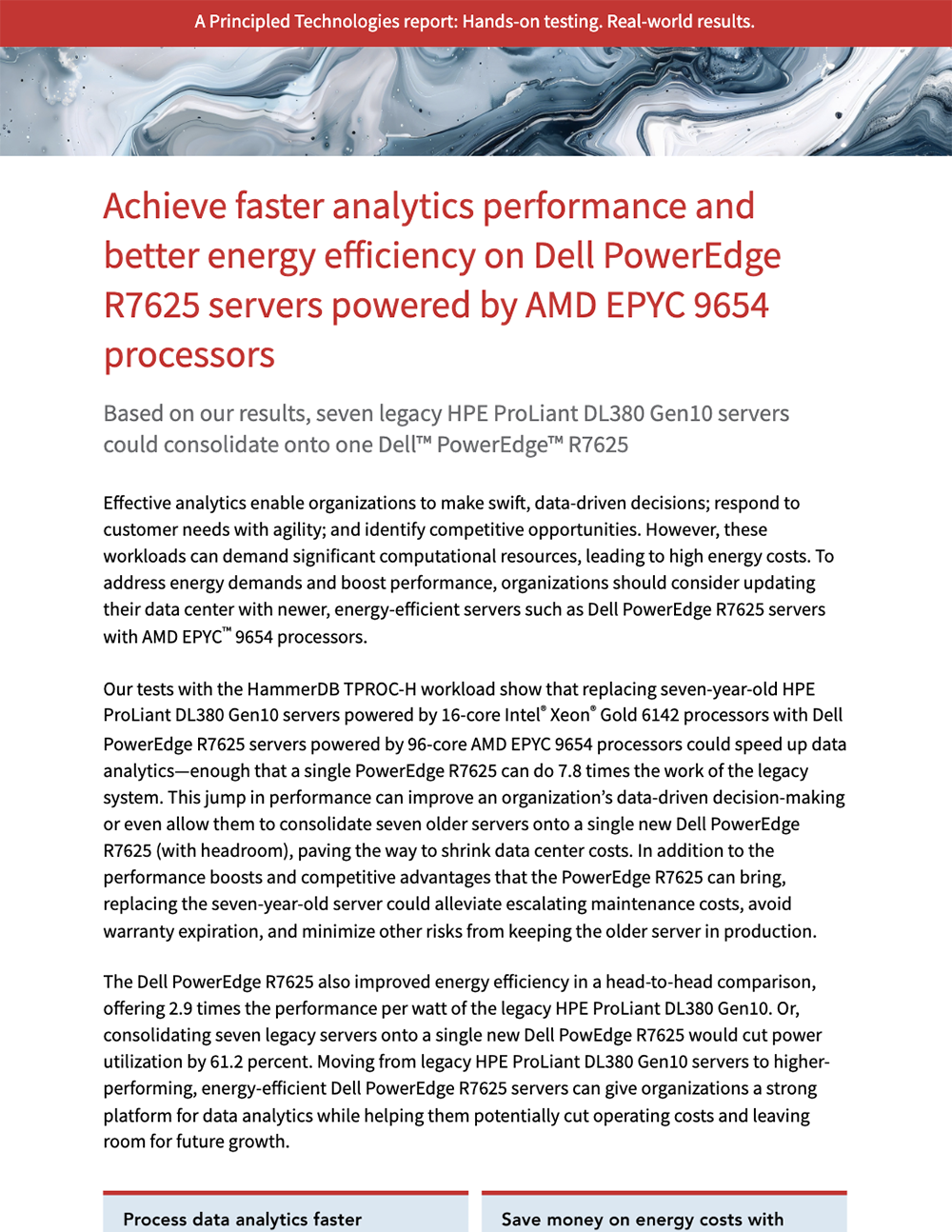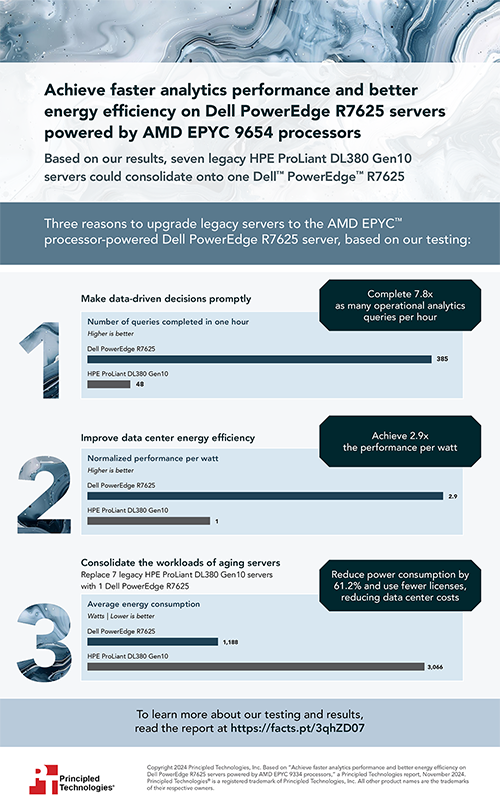
Innovations in data analytics processes—and the software and hardware tools that support those processes—have unlocked new and sometimes transformational ways for established businesses, entrepreneurs, and researchers to extract more value from existing data stores. With effective analytics programs in place, organizations can more quickly identify lucrative opportunities or potential trouble spots, fine-tune operations to focus more resources on fruitful initiatives, and shore up their decision-making processes with better objective data. The ability to quickly crunch big data, however, often comes at the cost of significant computational and infrastructure demands. The need for high-performance servers and the energy supplies that drive them can limit the ability of some organizations to profit from the analytics game as much as they could. Latest-generation, energy-efficient servers could be the springboard those organizations need to embrace more of the benefits of big data.
To assess the potential benefits of one server upgrade path, we used the industry-standard HammerDB benchmark to compare the data processing performance of a seven-year-old, Intel Xeon Gold 6142 CPU-powered HPE ProLiant DL380 Gen10 server to that of a new AMD EPYC 9654 CPU-powered Dell PowerEdge R7625 server. During testing, we also recorded each server’s power consumption and calculated a performance per watt metric that we used to measure energy efficiency.
In our tests, the PowerEdge R7625 completed up to 7.8 times as many database query sets per hour and offered 2.9 times the performance per watt compared to the legacy ProLiant DL380 Gen10. These performance gains are large enough that a business running similar workloads could potentially consolidate seven older ProLiant DL380 Gen10 servers onto a single Dell PowerEdge R7625, which could result in significant savings in ongoing operating costs such as maintenance, server licensing, power and cooling, rack space, and more. Our results show that by moving from older HPE ProLiant DL380 Gen10 servers to new Dell PowerEdge R7625 servers, organizations running data analytics workloads can put themselves in a good position to meet and exceed growing operational demands for years to come—while keeping operations costs under control.
To learn more about our Dell PowerEdge R7625 performance and power efficiency comparison tests, check out the report and infographic below.
Principled Technologies is more than a name: Those two words power all we do. Our principles are our north star, determining the way we work with you, treat our staff, and run our business. And in every area, technologies drive our business, inspire us to innovate, and remind us that new approaches are always possible.







